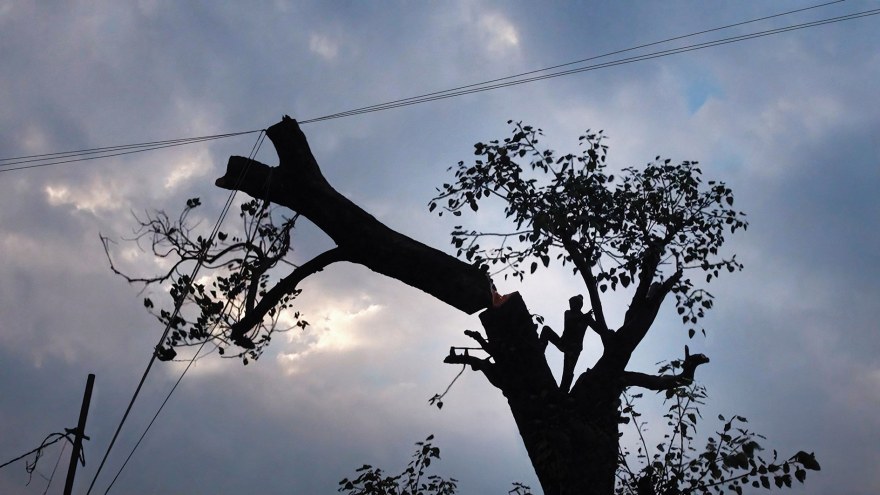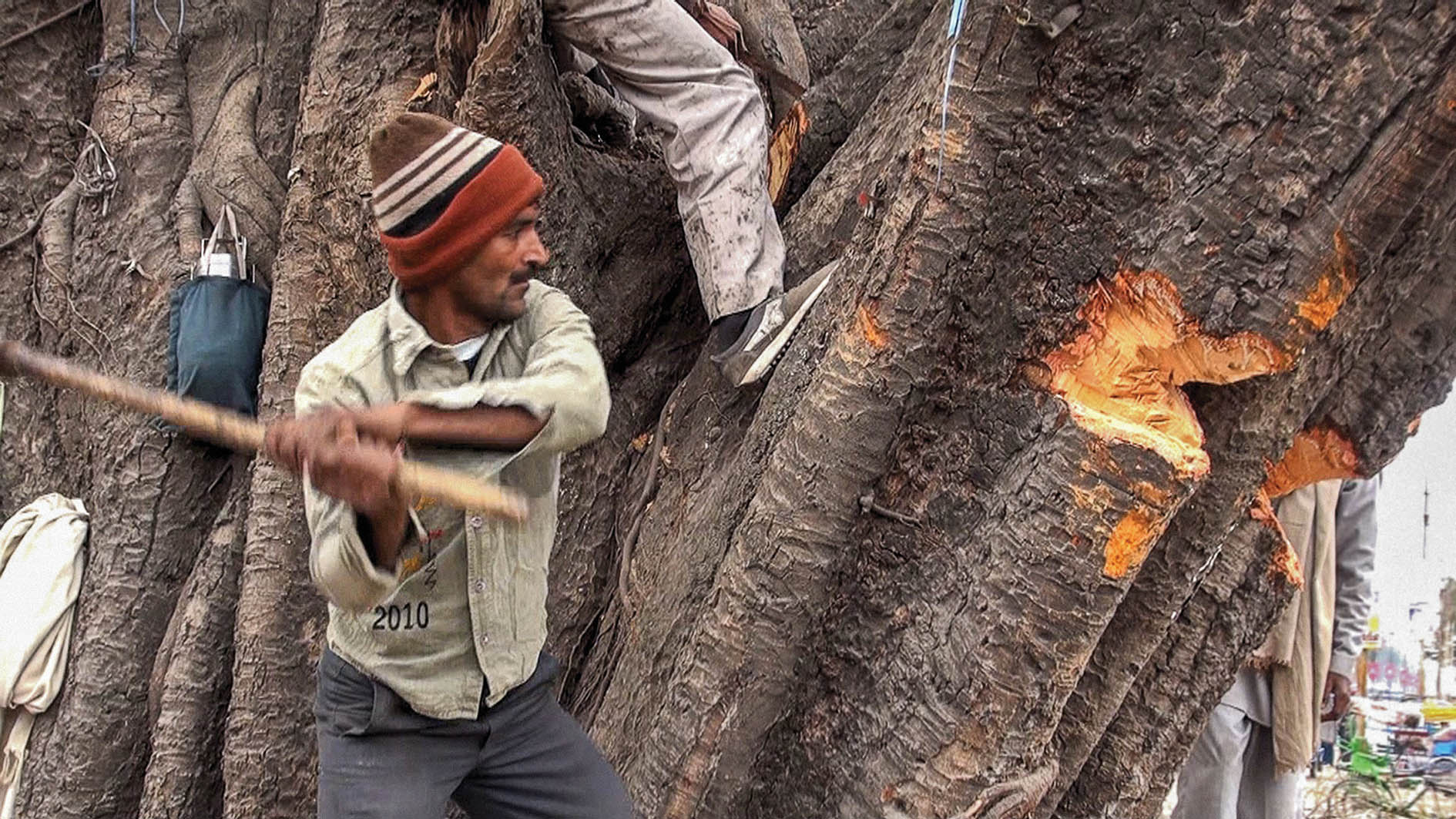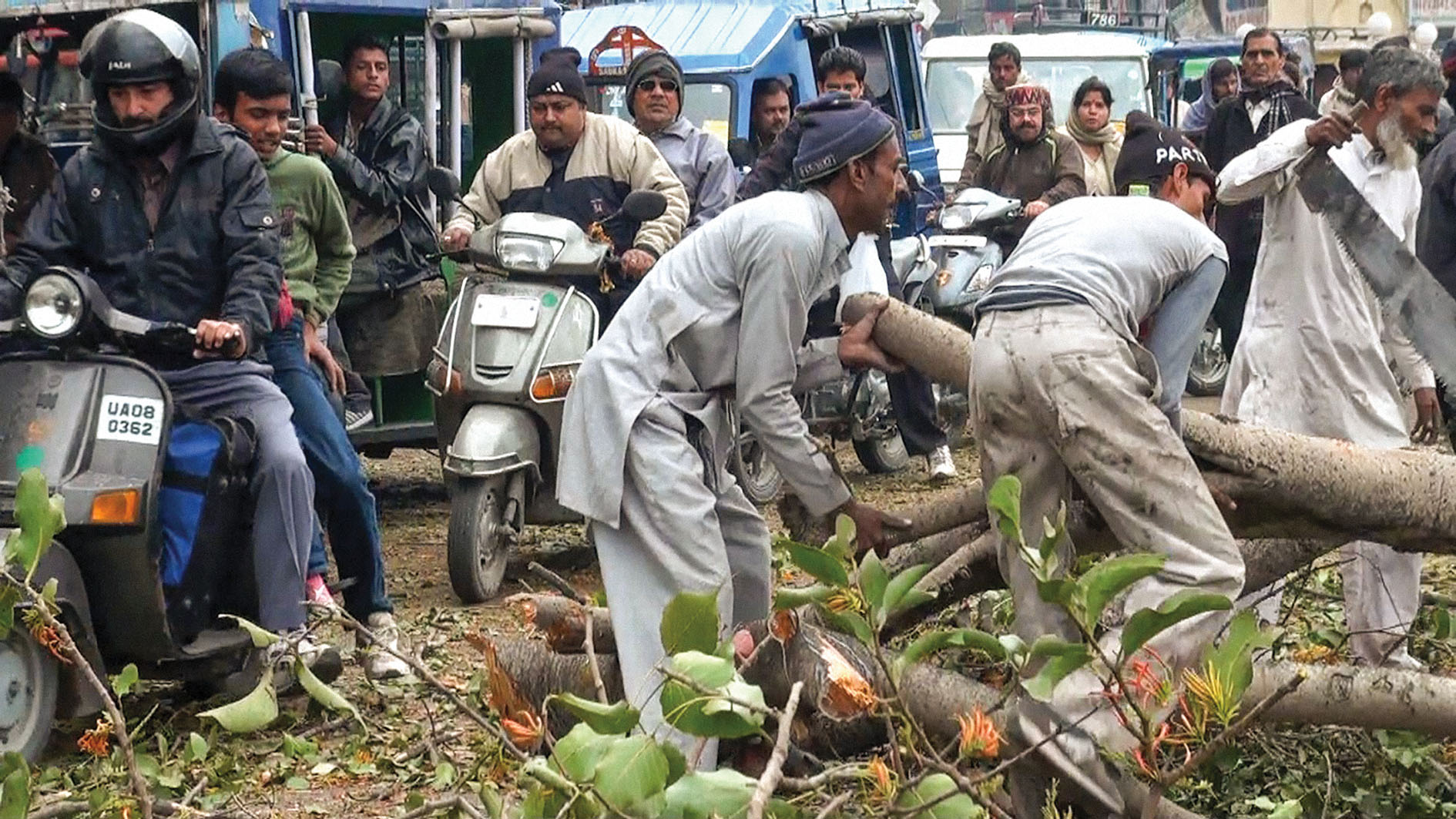Lunch with The Peepul Tree
Interview with Sonja Feldmeier, director of The Peepul Tree
Can you tell us more about how you came across the felling of this tree? What drove you to make a film about it?
All this happened in 2011 in Haridwar, a city in northern India. I encountered this spectacular tree felling on my way to the Himalayas. I was shocked and equally fascinated by the risky felling of this ancient and sacred tree giant. The background that caused this tree felling remained hidden to me in the beginning. I only realized bit by bit why the ancient tree had to be removed. I was travelling on my own and had no common verbal language with the tree fellers. Nor did I have any companions from my own culture to discuss what was going on. I developed the filmic realization of The Peepul Tree out of the very intense experience of no common verbal language, as well as my uncertainty about the background of what was happening.
How open where the workers to participating in the filming process?
The workers were very pleased with my interest in their operation and made me feel very welcome in their circle from the very beginning.
How did you eventually manage to communicate with them?
Knowing that only the sound and not the words themselves are understood, we often spoke in our own language and accompanied this “singing” with facial expressions and gestures.
This is a mostly silent film. What was the decision behind that? Why did you choose this particular narrative process?
Out of the impossibility to communicate with the workers by means of language, I developed voices for the various protagonists in the form of music. I am a synesthete. In this project I have used this perception for the first time as a direct artistic resource. Synesthesia describes the involuntary coupling of two different sensory perceptions, for example of colours and sounds. This means that I also had tonal perceptions of the tree fellers. To transform these perceptions into a soundtrack, I consulted a friend of mine, film composer Voya Anicic. Voya is also a synesthete. Sharing this form of synesthesia reception and communication, we created the soundtrack in a long process via images and sounds. Every eye contact with me is shown in slow motion. It also triggers the individual soundtracks. My goal is to be perceived by the audience as an observer and as part of the scene, even if I am behind the camera. The concept of the soundtrack also aims to inscribing explicitly my subjective perspective into the film narrative.
What do you think the future holds for short films?
Especially with online film consumption, short film has experienced a high. At the same time, care must be taken that a free culture does not spread in the short film sector. The cultural value of short film must be defended.
If we were to go back into lockdown, what cultural or artistic delights would you recommend to alleviate our boredom?
In addition to a fabulous online offering of film rarities, many museums around the world have created digital contributions over the past year that offer interesting insights into their collections and behind the scenes. Many cinemas also offer affordable streaming services. And then there is still plenty of time to indulge in your own inner cinema and dream a lot!
The Peepul Tree is part of International Competition I4.










